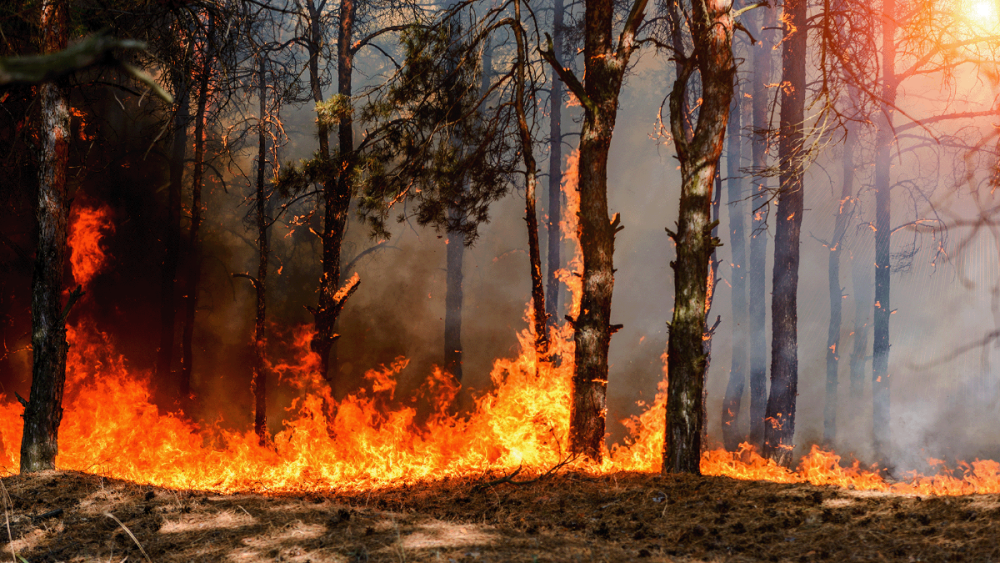-
 Brush Fire Safety
Brush Fire Safety
Prevention
According to NFPA, 96% of all brush fires are started with a man made source and 74% are easily prevented.
- Be sure that smoking materials are disposed of properly in fire-resistant containers.
- Provide metal containers for cigarette disposal to prevent them from being tossed on the ground.
- If you have a campfire or bonfire, be sure it is completely out.
- Avoid outside fires on dry or windy days.
- When using equipment or mowing lawns, minimize sparks and avoid such activities when the fire risk is high.
- Leave fireworks to the professionals.
- Keep matches and lighters away from children.
- Avoid steel bullets outside as they can spark when they hit rocks or other hard objects.
- Reduce the risk from sparks by being sure nothing is dragging from your vehicle.
Protecting Your Home
Year after year, well prepared homes simply have brush fires burn around them while poorly prepared homes go up in flames. With a few modifications your home can be better prepared for a fiery situation. Please be aware, even the best prepared plans go bad at times, always evacuate your home if a brush fire is approaching.
- Clean roofs and gutters of dead leaves, debris and pine needles that could catch embers.
- Replace or repair any loose or missing shingles or roof tiles to prevent ember penetration.
- Cover exterior attic vents and under-eave and soffit vents with metal wire mesh no larger than 1/8 inch to prevent sparks from entering the home.
- Remove anything stored underneath decks or porches.
- Keep plants that burn fast and hot away from the structure.
- Get rid of dead branches, leaves, brush and tree limbs that hang over your home.
- Use gravel or some other non-combustible material next to the building instead of an organic mulch.
Most people have a long list of things to do around home and yard and not enough time to do them in. Landscaping to reduce the threat of fire can pay off in additional ways. Some of these techniques also increase the security of your home. In their information on crime prevention through environmental design, the Seattle Police Department recommends a maximum height of three feet for hedges and a minimum height of eight feet for tree canopies, particularly in areas close to doors and windows. This approach provides fewer hiding places. Higher tree canopies make it less likely that a fire that starts on the ground will reach the branches. Keeping tree branches, vegetation, and mulch away from siding or roof can not only limit fire spread, it can help keep carpenter ants out of the home.
More Information
Most of the information we used to create this article is a summary of the following sources:
Firewise's Have A Firewise Home: Firewise provides a very nice checklist to help you make sure you have your home protected and is also a great site for other fire related safety tips. http://www.firewise.org/~/media/Firewise/Files/Pdfs/Booklets and Brochures/HaveAFirewiseHome.pdf
NFPA BRUSH, GRASS, AND FOREST FIRES Report: http://www.nfpa.org/~/media/C4BFD30DCD6344E397650B189686F96E.ashx

